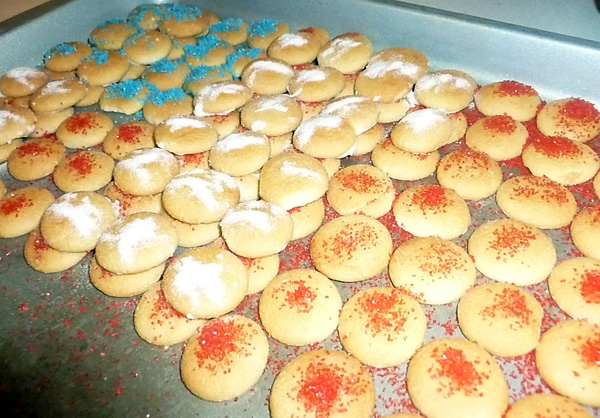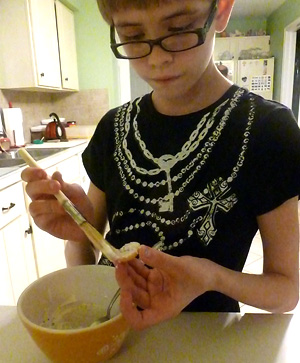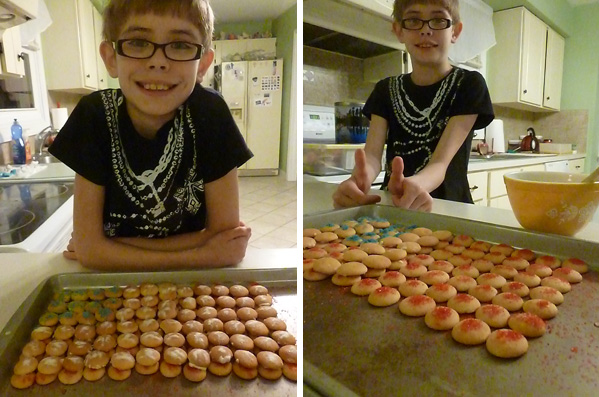Those are the books I’ve been reading for the past month – John Holt’s Learning All the Time, and Nancy Wallace’s Better Than School.
These books were written in the early to mid-1980s – even before I was a homeschooled student myself. The “system” of homeschooling has changed since then. But the thing is, these books are not about homeschooling – not really. They’re about how children – how PEOPLE – learn, and why “teaching” kind of misses the point.
In large part, I started reading these because I wanted some reassurance. Reassurance that it’s OK to trust that Ashar will learn what she needs to, when she needs to. Reassurance that I’m not somehow “setting her back” by not sitting down to a stack of workbooks or assignments. Reassurance that she’s going to remember things even if she’s not preparing for a quiz or test on them.
Instead, I was reassured of some things I didn’t even know I needed help with! I’ll come back to that in a little bit, but first, bear with me as I share some of my favorite excerpts from these great books, which, by the way, I think should absolutely be required reading for every parent or teacher.
From Learning all the Time:
“I have known plenty of school-taught children for whom 4+3, 14+3, 24+3 and 34+3 were completely different problems. They might say that 4+3=7 and then turn around and say that 24+3=29, or something even more ridiculous. This is what happens when people teach arithmetic as a pile of disconnected facts to be memorized. Children have no sense of the logic or order of numbers against which they can check their memory, or that they can use if their memory is uncertain.”
YES! Yes, yes, a thousand times. I mentioned before that I have a passion for sharing my ideas about real-world math, meaning the conceptual stuff I believe everyone should know, not the “Joan was a math major and likes to do differential equations for fun” stuff.
“What adults can do for children is to make more and more of that world and the people in it accessible and transparent to them. The key word is access: to people, places, experiences, the places where we work, other places we go… On the whole, kids are more interested in the things that adults really use than in the little things we buy especially for them.”
In the same passage, Holt continues:
“Not only is it the case that uninvited teaching does not make learning, but – and this was even harder for me to learn – for the most part such teaching prevents learning. Now that’s a real shocker. Ninety-nine percent of the time, teaching that has not been asked for will not result in learning, but will impede learning.”
If I had to “support” my idea to someone that I’m not doing any favors to Ashar by making her sit down and go through a math textbook, this is the passage I would use. Ashar, for better or worse, does not at this moment want to “learn math.”
Now, she does math. She does it quite a lot – she just doesn’t know it. So instead of “teaching” her math, I answer her questions and talk with her about the numbers and logic of the world around us – when she wants to. And she’s had more serious “aha moments” or successes that way than in six years of public-school math! She ALMOST understands that multiplication has to deal with sets of things! Seriously? That’s an incredible improvement – and it’s backed up by… you guessed it…
More Holt!
“Children have their own styles of learning, every one unique. They also have their own timetables, according to which they are ready to do things, speeds at which they want to do them, and time they want to wait before doing a new thing. When we try to direct, or interfere with, or change these learning styles and timetables, we almost always slow or stop them.”

“The truth is that anyone who is really living, exposing himself or herself to life and meeting it with energy and enthusiasm, is at the same time learning. It is worrying about learning that turns off children’s learning. When they begin to see the world as a place of danger, from which they must shut themselves off and protect themselves, when they begin to live less freely and fully, that is when their learning dies down.”
I’m certainly not the first person to share this last quote, which is just about a staple on the Pinterest boards and Facebook pages of the unschooling or interest-led learning world.
“A child only pours herself into a little funnel or into a little box when she’s afraid of the world – when she’s been defeated. But when a child is doing something she’s passionately interested in, she grows like a tree – in all directions. This is how children learn, how children grow. They send down a taproot like a tree in dry soil. The tree may be stunted, but it sends out these roots, and suddenly one of these little taproots goes down and strikes a source of water. And the whole tree grows.”
Oh, but how true is that, for Ashar and for so many other kids. I want to cry when I think about Ashar’s last two years in public school – and especially the first two-thirds of her sixth-grade year.
I keep promising to blog about those (I’d shared the earlier parts of our family’s educational journey here and here), but honestly? I get depressed every time I start to. I can’t make myself put the words on the paper that describe the way Ashar’s life was “a tree in dry soil,” to borrow John Holt’s phrase.
In large part, that’s why the other book, Nancy Wallace’s Better than School, stuck with me so much. While Nancy was smart enough to bring her gifted son, Ishmael, home from school after a miserable first-grade year, I waited a few years longer. That said, as I read Ishmael’s story in Nancy’s book, I absolutely could see her painting a picture of Ashar, a square peg in a round hole who just became more and more miserable each week.
But it does get better – though sometimes it’s hard to step back enough to actually see the “better” parts. (But I’m slowly learning!)
This was a great example from Better Than School in which Nancy is talking about her young daughter, Vita, and a particularly challenging “math problem.”
“There is one problem I made up, though, that she refused to get right. It went, ‘If there are three little girls, and they divide a chocolate cake into six pieces, how many pieces does each girl get?’ ‘That’s an easy one,’ Vita answered casually. ‘They each get one piece.’ No matter how many times I went over the problem, she always answered, ‘one.’ Finally, when I was totally exasperated, Vita explained that almost certainly, considering that the cake was chocolate and the pieces were so large, the girls’ mother would never let them eat seconds.”
That’s Sarah. I read that and I immediately could hear Ashar explaining that to me, and I could see Ashar making similar arguments about all the answers on a multiple-choice test. Ashar has been notoriously “bad” at multiple-choice, and I truly believe that’s why; she looks at all the answers and can come up with some reason why EVERY one is incorrect, so she just picks any old one!
More from Better than School, now talking about Nancy’s son Ishmael:
“The longer he was out of school, the more I began to notice that – regardless of how much time I actually spent teaching him – the pattern of his learning was uneven. It took the form of cycles of intense activity followed by rest. During his active periods, he tended to focus on only one or two primary interests at a time, like playing the piano and reading biographies or putting on plays and writing poetry. And, as though to recuperate from his creative outbursts, he would then spend weeks doing what I considered to be nothing – riding his bike up and down the same stretch of road, making title pages for books which he never wrote, and reading the same books over and over again. It always took an act of faith on my part to believe that he’d snap out of his doldrums.”
Oh, this is such a struggle for me. First off, it’s hard to get used to the idea that learning has very little to do with teaching, much of the time. I’m getting there, but that’s a hard concept when I’ve accepted for so many years that you have to be “taught”
Faith is the word Nancy uses, and I believe it’s key. Faith in Ashar, faith in myself, faith that Ashar will be a success and to learn all that she needs to know when she needs to know it.
The reassurance I didn’t even know I was looking for came toward the beginning of Better than School, actually. Nancy writes:
“Much of this book, while on the surface about our home-schooling experiences, is really about how we have increasingly learned to trust our own instincts and ‘know-how’ in order to raise Vita and Ishmael in ways that make sense to us, even in the face of disapproval, interference, and distrust. I hope that our successes will encourage other parents to find ways to share more of their lives with their children, despite the obvious obstacles… in general, by not underestimating the importance of the time that they actually spend with their kids.”
That’s the faith I’m talking about. The faith that whatever we’re doing – if we’re doing it in the spirit of spending time with Ashar, and truly sharing our lives – that it’s enough. We’re enough.
We’re still learning – all of us. Together. And it’s pretty awesome.
So what have you been reading lately??





 To get your sprinkles to stick, simply brush the Nilla Wafers with a little bit of plain water, then sprinkle the colored sugar.
To get your sprinkles to stick, simply brush the Nilla Wafers with a little bit of plain water, then sprinkle the colored sugar. 